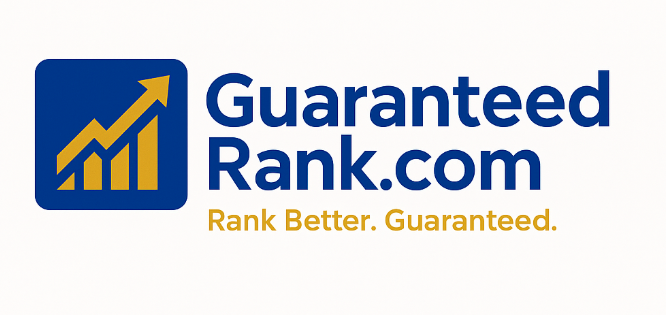Approaching SEO for local services involves a strategy that focuses on helping your business rank higher in local search results. This is crucial for businesses that rely on customers in a specific geographic area. Here’s a step-by-step guide to effectively implement SEO for local services:
1. Optimize Your Google Business Profile (GBP)
- Claim & Complete Your Profile: Ensure your Google Business Profile is claimed and fully filled out. Add your business name, address, phone number (NAP), website, business hours, and other relevant details.
- Select the Right Categories: Choose the most accurate primary and secondary business categories to help Google understand your services.
- Add Photos & Videos: Regularly upload high-quality images of your business, products, or services. This can boost engagement and visibility.
- Encourage Reviews: Ask happy customers to leave positive reviews on your profile. Responding to reviews shows you value customer feedback.
- Post Updates: Use the "Posts" feature to keep your customers updated on offers, news, and events.
2. Optimize for Local Keywords
- Research Local Keywords: Use tools like Google Keyword Planner, Ahrefs, or SEMrush to find keywords that include your location (e.g., “plumber in [city name]” or “best roofing services near me”).
- Long-Tail Keywords: Focus on long-tail keywords specific to your area. These tend to have lower competition and are more likely to attract local customers.
- Optimize On-Page Content:
- Include location-based keywords in your title tags, meta descriptions, header tags, and body content.
- Ensure your website’s content speaks directly to your local audience (mention city neighborhoods, landmarks, etc.).
3. Local Citations & Listings
- Ensure NAP Consistency: Your Name, Address, and Phone number (NAP) must be consistent across all online platforms (website, Google Business Profile, social media, local directories, etc.).
- Submit to Local Directories: Get your business listed on local directories like Yelp, Yellow Pages, and BBB. These provide authoritative backlinks and help with local visibility.
- Focus on Niche Directories: In addition to the big directories, ensure you’re listed on industry-specific or regional directories.
4. Create Localized Content
- Blog About Local Topics: Write blog posts that cater to local issues, events, or topics relevant to your industry (e.g., “Top 5 things to do in [City] this weekend” for a local event company).
- Highlight Local Customer Success: Share case studies, testimonials, or reviews from local clients to improve relevance.
- Use Local Landmarks: Mention local landmarks or neighborhoods in your content to show Google and users that you are embedded in the local community.
5. Build Local Backlinks
- Partner with Local Organizations: Collaborate with local influencers, charities, or businesses to get backlinks to your site.
- Sponsor Local Events: Sponsoring or participating in local events can help you earn mentions or backlinks from local news outlets and websites.
- Get Featured in Local Media: Pitch your business to local news outlets and blogs to earn local backlinks.
6. Mobile Optimization
- Ensure Your Site is Mobile-Friendly: Many local searches are done on mobile devices. Make sure your website is responsive and fast-loading to improve user experience and rankings.
- Click-to-Call Functionality: For local services, users often want to contact you directly. Implement click-to-call buttons for easy access.
7. Local Link Building & Community Engagement
- Engage with the Community: Participate in local forums, comment on community blogs, or engage with social media groups specific to your area. These interactions can increase local visibility.
- Sponsor Local Events or Activities: Getting involved in local charities, sponsorships, or events can result in more local exposure and backlinks to your site.
8. Utilize Social Media
- Be Active on Local Social Media Groups: Join local Facebook groups or LinkedIn groups and actively participate in conversations.
- Promote Local Offers: Share location-specific promotions or discounts on platforms like Facebook, Instagram, and X (formerly Twitter) to increase engagement from local users.
9. Use Structured Data Markup (Schema.org)
- Add Local Business Schema: This code helps search engines understand the specifics of your business, such as hours, services, and location, which can improve your chances of appearing in local search results or Google’s Knowledge Panel.
10. Measure and Analyze Performance
- Track Local Rankings: Use tools like Google Search Console or Moz Local to track your rankings for local search queries.
- Monitor Local Traffic & Engagement: Use Google Analytics to track how many users are coming to your website from local searches.
- Adjust Your Strategy: Based on your findings, make adjustments to your content, keyword focus, or backlink strategy to improve local rankings.
11. Optimize for “Near Me” Searches
- Near Me Optimization: Many people search for services “near me” or with location-based queries (e.g., “car repair near me”). Optimize for these queries by ensuring your NAP data is accurate and consistent, and by using local keywords throughout your website.
- Location Pages: If you serve multiple areas, create specific pages for each location with unique content.
Conclusion
Local SEO for services focuses heavily on optimizing your presence for specific geographic areas. This involves claiming and optimizing your Google Business Profile, ensuring NAP consistency across directories, creating localized content, and earning local backlinks. Always monitor your performance and stay engaged with your local community to maintain and grow your local presence online.










0 Comments